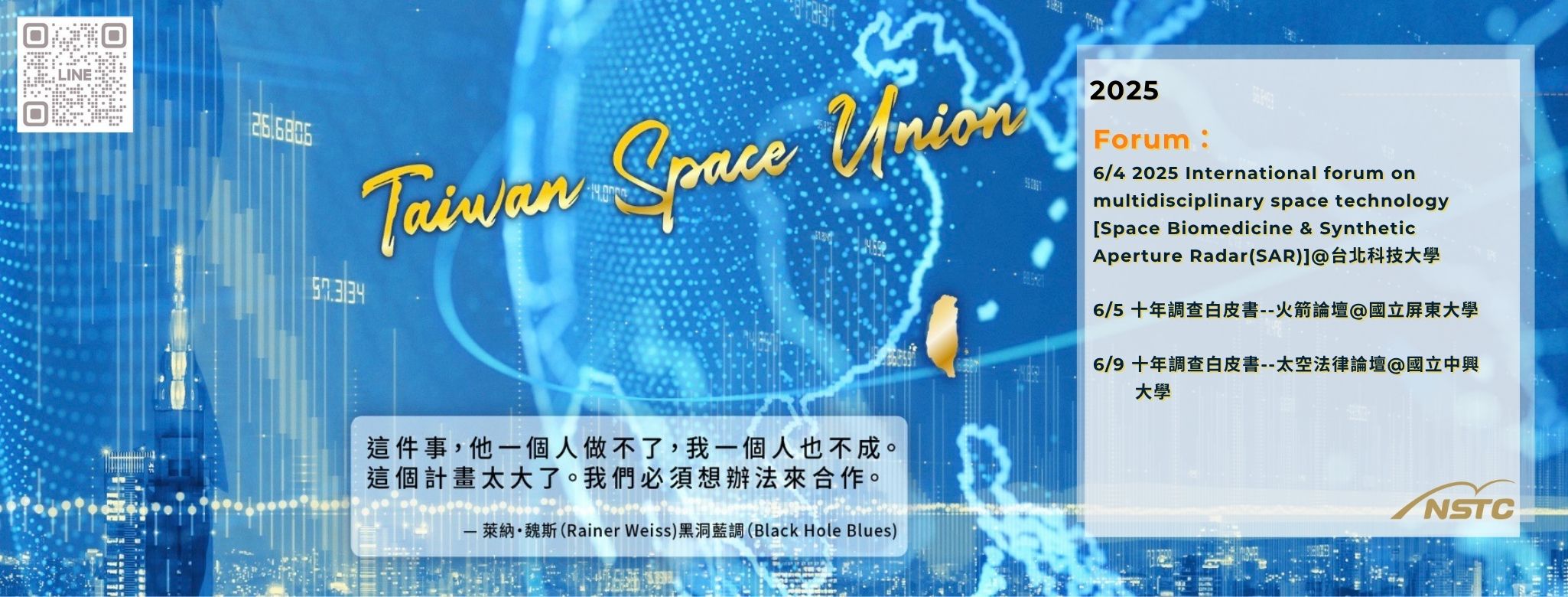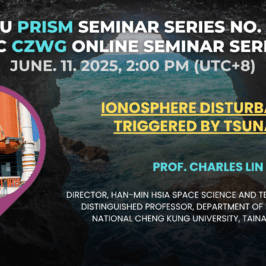Loren C. Chang1,2, Wei-Yi Lin1,2, Yi-Hsuan Chou1,2, Jen-Siang Lin1,2, Chieh Lung1,2, I Chen1,2, Kai-Jie Hou1,2, Glenn Franco Gacal1,2, Yi-Chung Chiu1,2, Yushun Wang1,2, Hui-Hui Chou1,2, Chi-Kuang Chao1,2, Jann-Yenq Liu1,2, Tung-Yuan Hsiao3, I-Chun Cho4,5,6,1
1 Department of Space Science and Engineering, National Central University
2 Center for Astronautical Physics and Engineering, National Central University
3 Institute of Nuclear Engineering and Science, National Tsing Hua University
4 Research Center for Radiation Medicine, Chang Gung University
5 Institute for Radiological Research, Chang Gung University
6 Radiation Research Core Laboratory, Linkou Chang Gung Memorial Hospital
*loren@g.ncu.edu.tw
摘要 (abstract)
Regions outside of Low Earth Orbit (LEO, altitudes above approximately 1000 km) are classified as “deep space”, including Medium Earth Orbit (MEO), geostationary orbit (GEO), as well as cislunar and lunar space. The deep space environment poses many challenges for human and robotic exploration, including stronger ionizing radiation fluxes, more extreme temperature variations, as well as limited data downlink volume. With the growth of the rideshare and hosted payload model aboard government and commercial lunar missions, developing the capacity to design and implement payloads and other space avionics for this environment is of increased importance this decade. Utilizing one of the growing number of rideshare opportunities offered by commercial lunar mission providers, National Central University (NCU) has developed of Taiwan’s first scientific payload for lunar lander use, with launch aboard the HAKUTO-R Mission 2 (M2) lander from ispace, inc. scheduled not earlier than January 2025. This Deep Space Radiation Probe (DSRP) will provide measurements of ionizing radiation dose, dose rate, and single event upset (SEU) rate during the Earth-Moon transit, in lunar orbit, as well as on the lunar surface. DSRP utilizes elements of the on-board computer (OBC) developed and flight qualified aboard the NCU-developed IDEASSat 3U CubeSat mission in 2021, and was developed by a student team, in consultation with experienced engineers from the lunar lander team. In this presentation, we will report on the objectives, concept of operation, design, and implementation of the DSRP project. We will also describe the steps taken to facilitate parallel development of the DSRP payload and the HAKUTO-R M2 lander, as well as lessons learned during the design, implementation, and qualification process. The radiation data provided by DSRP will be beneficial for the development of future deep space spacecraft avionics, as well as crewed missions, and will also serve to build the capacity for deep space spacecraft and payload development at NCU.
關鍵詞:lunar payload, deep space, ionizing radiation, galactic cosmic rays, single event effects.


